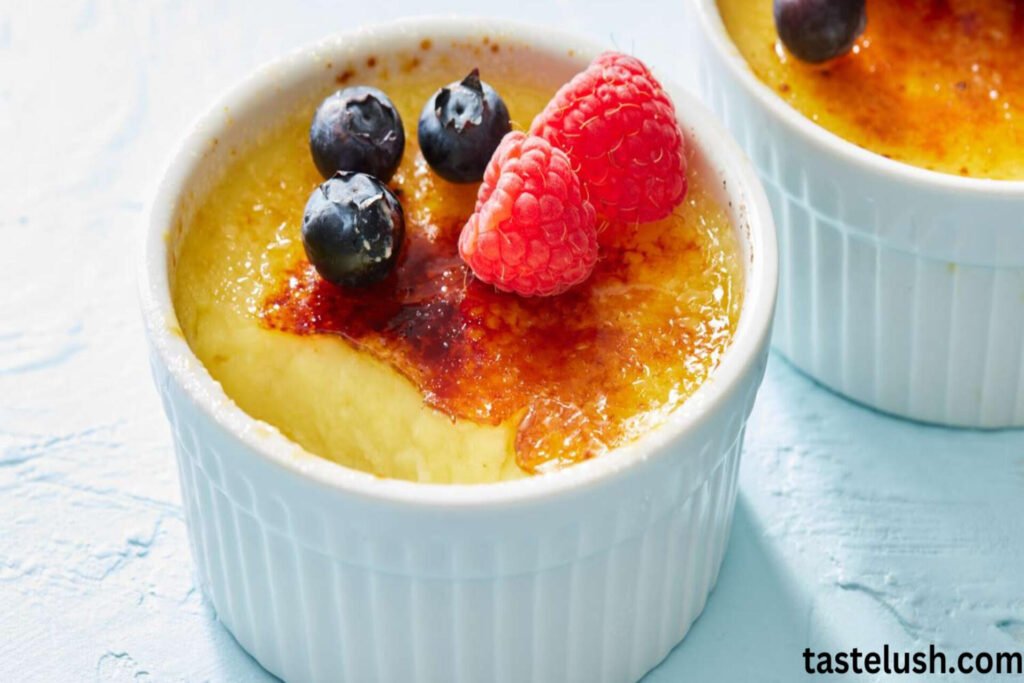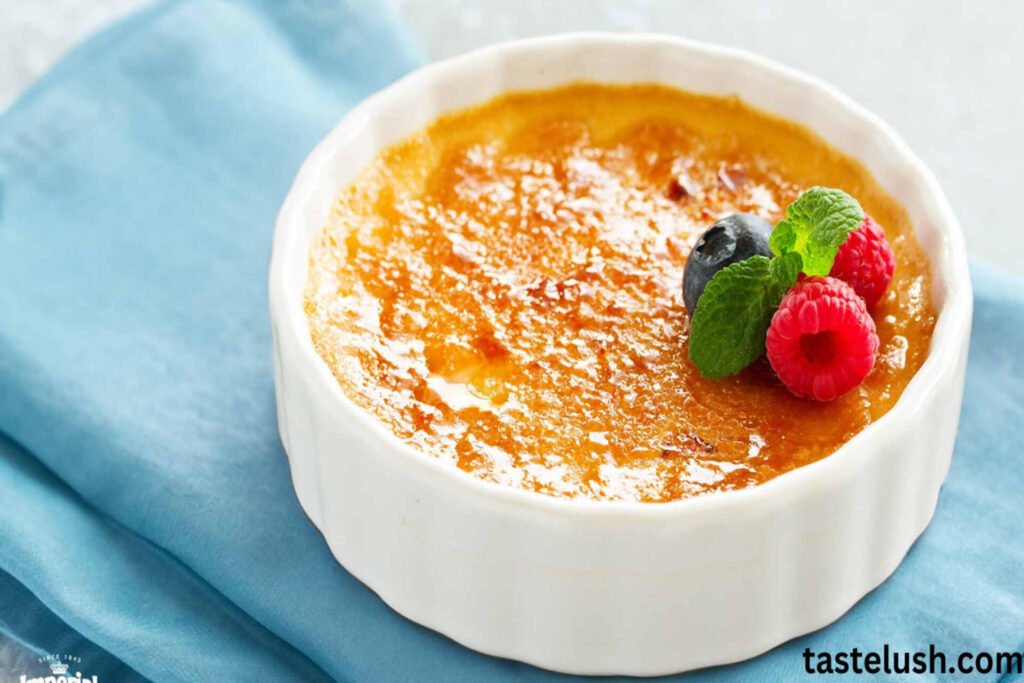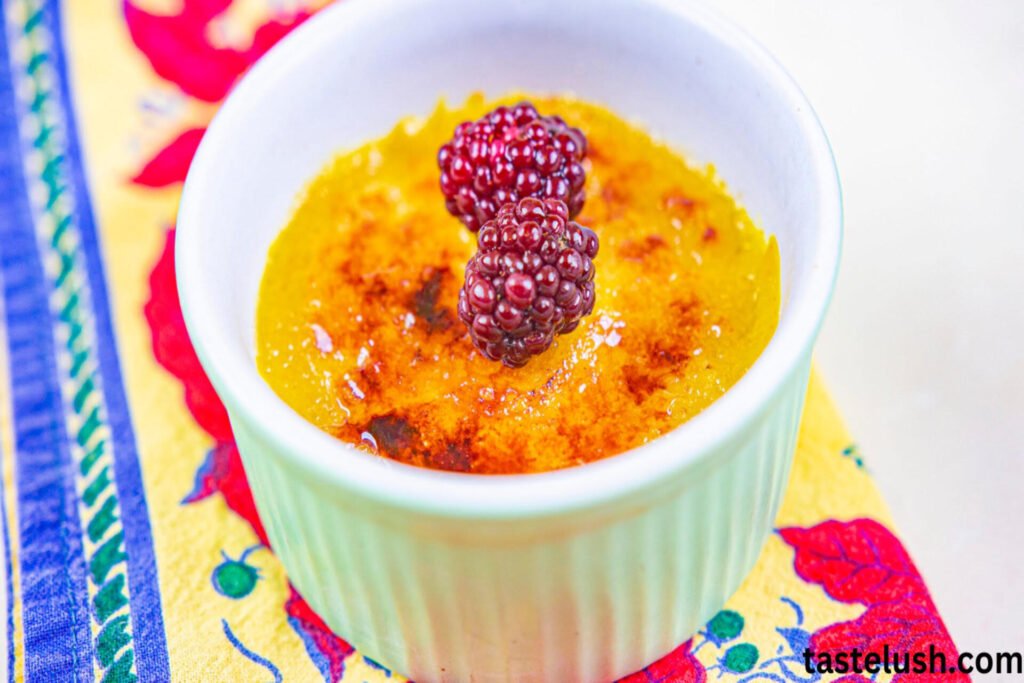No dessert is as sophisticated and yet easy to prepare as the brûlée. Brûlée desserts feature a custard-like base finished with hard caramelized sugar on top and are versatile to put any meal into a festive atmosphere. The all-time favorite Crème Brûlée does not only have a classic recipe that is well known but there is a lot more to taste. Welcome to our guide to some mouthwatering brûlée recipes – all recipes include fun twists on this popular dessert and practical advice, frequently asked questions, and nutritional information, to help you get the most out of this treat.

Table of Contents
What is Brûlée?
Learning More about Brûlée and Its Roots
The name brûlé comes from the French word ‘burnt’ and is usually used to describe the caramelized sugar layer as in crème brûle. Many of these include custards and are set by caramelizing sugar on top of the pudding until it produces a highly glass-like layer when cooled. It is for this reason that the texture; a smooth, creamy custard base with its caramelized top or the brûlée has remained popular in most restaurants across a wide region.
Classic Crème Brûlée Recipe
A very classic Crème Brûlée Recipe
It is impossible to list so many delicious and aristocratic but rather easy recipes; however, Crème Brûlée is one of the most popular examples. Here’s how to create this classic dessert at home:
Ingredients:
2 cups heavy cream
1 vanilla bean / 1ml vanilla extract
5 large egg yolks
1/2 a cup granulated sugar, additional for sprinkling on top.
Instructions:
Prepare the Cream: Introduce your oven to 325 degrees Fahrenheit (163 degrees Celsius). In a saucepan heat the cream and vanilla bean over medium heat until the cream comes to a boil. That’s when it’s extracted from heat and allowed to steep in the vanilla.
Mix the Yolks and Sugar: In a medium mixing bowl beat the egg yolks and sugar until creamy. Gradually pour in the warm cream mixture into the egg mixture stirring the mixture simultaneously.

Bake the Custard: Transfer the custard into individual dishes and put them in a baking pan, suitable for the oven. Pour hot water into the dish to come halfway up the ramekins. Bake for 40–45 minutes or until the custard is just set and still shaking a little from the oven.
Caramelize the Topping: Allow the custards to cool. Scatter about an eighth of an inch of sugar atop the prune mixture and brown under the broiler or caramelize with a torch.
Serving Tip: Let it blend for another 10 minutes before serving to get the right creaminess.
Variations on Brûlée
Chocolate Brûlée
Stirring chocolate adds a richer version of a brûlée that will be satisfying for chocolate enthusiasts.
Ingredients: Replace half the quantity of the cream by melting the dark chocolate.
Instructions: This is done in the same manner as the basic recipe, but after heating the cream, melt in some chocolate for extra depth of flavor.
Fruit-Infused Brûlée
Use fruits that are perceived to be natural such as berries for that natural and added twist of citrus for zesty flavors.
Ingredients: Put a spoonful of fresh berries or the rind of one lemon or orange to the cream before cooking.
Instructions: Squeeze the cream before using it to mix with the egg yolks and the residue must have a fruity flavor only.

Vegan Coconut Brûlée
When using vegan ingredients, coconut milk works great when incorporated into a dish that requires heavy cream.
Ingredients: Replace cream with full-fat coconut milk, and add 1 tbsp of cornstarch for that added thickness.
Instructions: The preparation technique remains the same as for the traditional soup, but it might take a couple of minutes more to thicken up properly.
| Nutrient | Amount per Serving |
|---|---|
| Calories | 330 kcal |
| Fat | 28 g |
| Saturated Fat | 17 g |
| Carbohydrates | 17 g |
| Sugar | 16 g |
| Protein | 5 g |
| Calcium | 10% Daily Value |
Tips for Perfect Brûlée
Use a Culinary Torch: A kitchen torch helps to caramelize, brown the top evenly, and not overcook the custard at the same time.
Choose Ramekins Wisely: There is more of the yummy, crunchy crust if the dishes used are shallow and broad like these little ramekins.
Temperature Control: Never bake at high temperatures because this is likely to cause curdling. This allows the custard to cook through in the water baths.
Patience with Cooling: Making sure that the custards are cooled before caramelizing makes it possible to get a great firm custard feel on the mouth texture.

FAQs
Q1: Can I make brûlée without a torch?
A: Yes! Use your oven’s broiler on a high setting. Place the ramekins close to the broiler and watch closely to prevent burning.
Q2: How long does Crème Brûlée last in the fridge?
A: Crème Brûlée can be stored without the sugar topping for up to 3 days. Add the sugar and caramelize just before serving for the best results.
Q3: What is the best sugar for brûlée?
A: Regular granulated sugar works best, as it caramelizes evenly. Brown sugar can work but may burn more easily.
Q4: Can I make a low-sugar version?
A: Yes, try using a sugar substitute like erythritol for the custard base, but be cautious with caramelizing as substitutes might behave differently under heat.
Conclusion
We have to say that brûlée desserts add some luxury and taste to any event. Here, we can learn how to develop those variants and widen our range of meals if we stick to the basic recipe. Traditional, fruit, chocolate, or a vegan version – brûlée can suit every sophisticated sweet tooth. Use these tips, relish the taste of the brûlée and enjoy the time you spend making restaurant quality brûlée at home.
